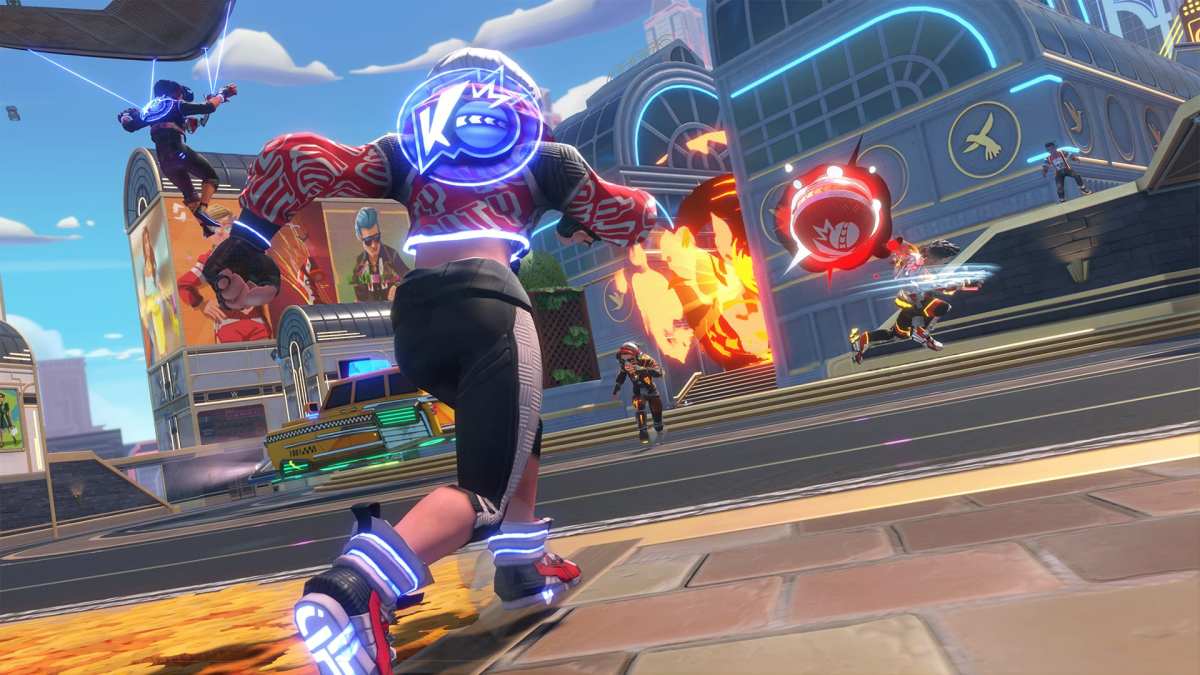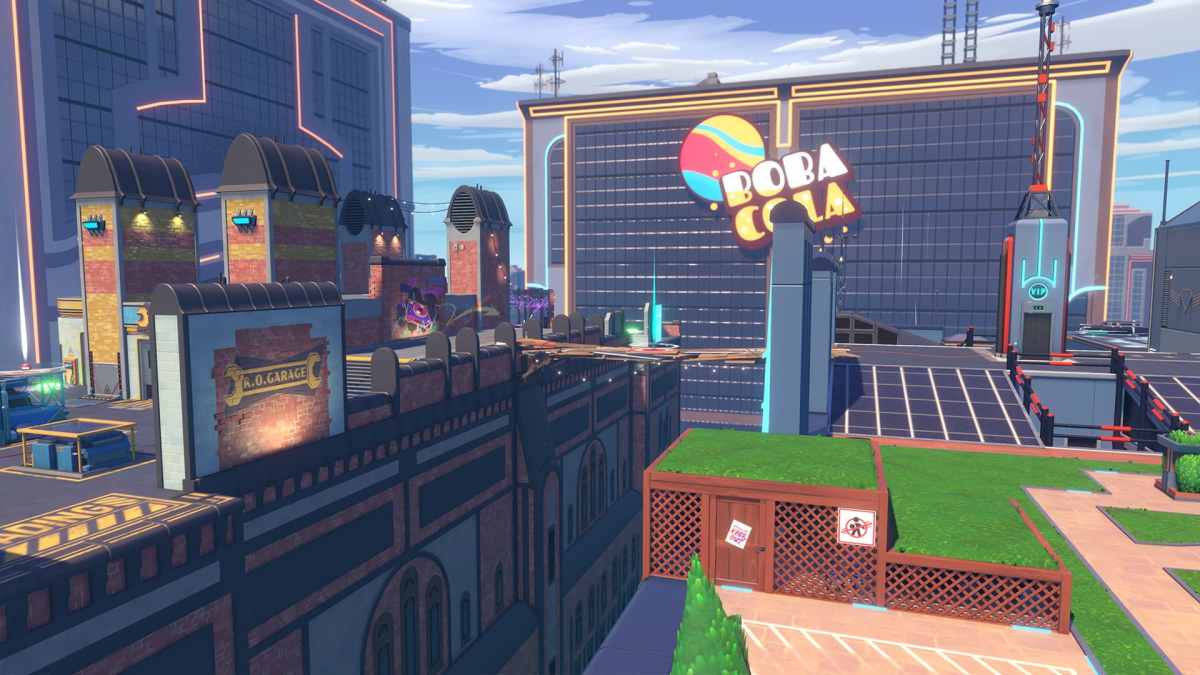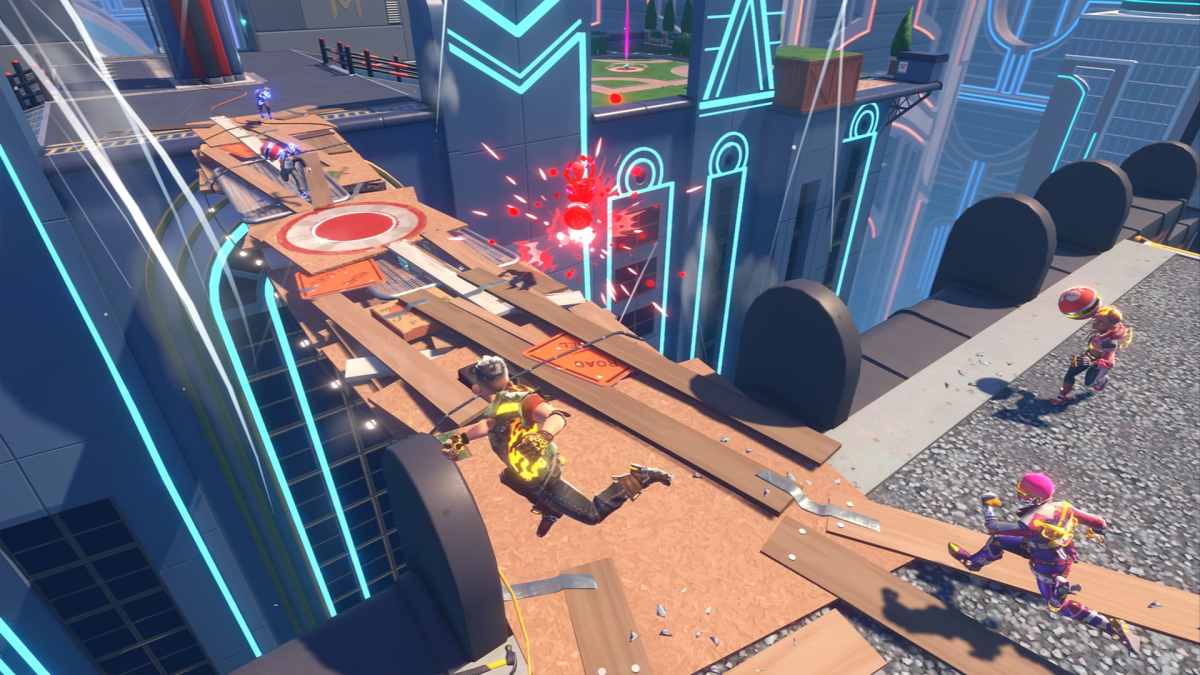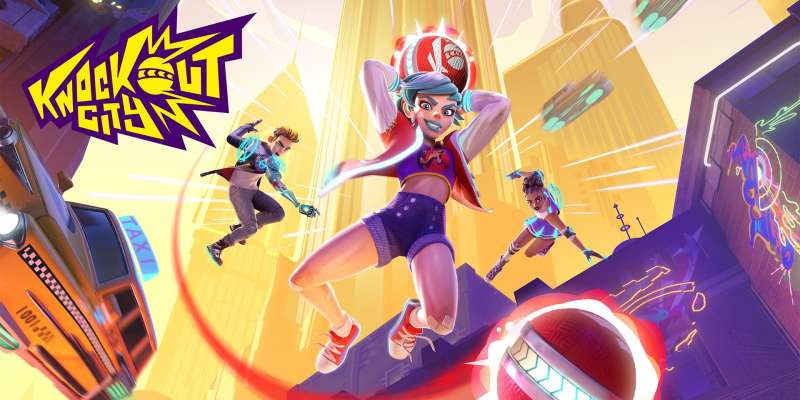Knockout City is the latest in a series of EA Originals where a lesser-known team creates a tight, small-scale, and often multiplayer experience that tries something fresh and new. I appreciate the initiative, but its output has been inconsistent. While A Way Out was an interesting co-op-only adventure game, Rocket Arena failed to ignite any excitement. Now enters Velan Studios’ dodgeball game Knockout City, boasting cross-play and cross-progression for Nintendo Switch, PlayStation 4, Xbox One, Steam, Origin, and, via backward compatibility, PlayStation 5 and Xbox Series X | S. In many ways, the game aims to be EA’s most ambitious Original yet.
Knockout City occurs in an alternate universe where teenage gangs fight for dominance by engaging in “dodgebrawls” across various parts of their futuristic city. A DJ on the Moon narrates these brawls. The primary gameplay conceit is that, by using dodgeballs rather than guns, you have a chance at catching incoming attacks, as well as curving the arc of your ball to pull off trick shots. You can also dodge attacks, tackle opponents, and hop around the world using bounce pads amid numerous dynamically rising, falling, and rotating elements to each map. Throw in some specialty balls like timed explosives, jump-boosting gravity balls, and a ball that traps opponents in a cage, and you’ve got a fairly solid suite of tactical options.
Unfortunately, it doesn’t all come together yet, not in the first beta test at least.
Knockout City needs more optimization. While the studio head for Velan spoke highly of their custom scripting language “Vscript,” its purported benefits don’t seem fully realized yet. Presently, catching an incoming enemy ball can feel like luck of the draw, and instances of jittering, laggy opponents were frequent enough to be concerning. More than a few of us ended up reporting surprisingly high pings.

The biggest problem is that Knockout City has team-based third-person shooter elements yet actually plays more like a fighting game. Players are supposed to be dancing around each other like they’re bunny hopping in Quake, yet typically it’s more about reading your opponent in a nanosecond. More meta elements like feigning a throw, which gets its own dedicated button, were scarcely used. It verges on feeling like a sloppier Bleeding Edge when everyone starts spamming tackles and dashing around in close quarters, trying to clobber each other. Though this appreciably raises the skill ceiling, it makes the climb to success all the more tedious.
Often the most effective strategy was to ambush lone wandering players on the enemy team. This doesn’t feel sporting, but given how little communication there was between players at the preview, it was the typical end result. Whether winning or losing, it never felt like a hard-won battle.
If the other team has more experience, making a comeback feels almost insurmountable, despite each mode’s round-based structure. A players vs. bots mode would help, but right now, players have a homebase social area with a stationary training bot and a single-player tutorial mission to get them started instead.
The game maps we played on all felt massively oversized for the 3v3 and 4v4 battles, making it a little more challenging to keep track of allies and opponents. There’s a glider players can whip out to slow their descent, but no map present had enough verticality to warrant using it. The lack of a ping system to nonverbally communicate, combined with voice chat being set to Group Chat rather than Team Chat by default, results in almost no way to coordinate besides a few context-sensitive prompts regarding throwing and passing balls.

The game doesn’t flow in such a way that you’re organically encouraged to keep moving around the map. Every mode present was just another Team Deathmatch variant. Something in the vein of King of the Hill or Capture the Flag would be a perfect fit though, especially if the flag were some unique kind of ball. It’s something I’d strongly recommend the team at Velan explore down the road.
The first thing Velan should address though is how easy griefing is right now, from costing your team a win by leaping out of bounds to colliding with allies to make them drop their balls. You can grab allies curled up in a ball and throw them out of bounds to compound the insult to injury. It’s easy to accidentally arm your opponents as well, since the audio and visual prompts for when best to throw your ball nudge you a second earlier than you should actually fire. Combine this with only having two hit points before being knocked out, and any time a group of enemies swarms you, you’re done.
The game’s current issues are a shame in that there is a good game underneath them. In the two matches I played that were fairly balanced and had teams who were working together, I saw the potential. Being able to go high or curve left or right with your ball feels great. While feigning was useless, players grabbing balls mid-air like a basketball was amazing to see. At its best, Knockout City employs some great ideas. There are some fairly creative strategies you can pull off, such as launching ultimates that summon an aerial AOE ground pound, and you can throw your allies as balls that do double damage, instantly KOing opponents at the risk of putting an ally in their midst if you miss.

Lastly, Knockout City offers a variety of customization options. The options available weren’t terrible, but they weren’t hugely exciting either. The major issue is that the art direction works great in 2D but appears more misshapen and blocky in 3D. Cel-shading or some other filtering might’ve helped with this, yet the game has more realistic textures, contrasting awkwardly. If nothing else, the team at Velan was eager to express it’s categorically averse to loot boxes, promising that none would be present in Knockout City.
Hopefully Knockout City will improve following its time in beta. If you want to try it for yourself, a closed public PC beta will be running Feb. 20 – 21. Knockout City will also have an initial free-to-play period at launch, letting players experience all it has to offer, with progress carrying over if they ultimately decide to purchase the game.
As it stands, Knockout City has potential but clearly needs a lot more time in the oven. There are several facets of its design that need a tune-up, and I’m worried it’s too late into production to address them all. We really need more creative multiplayer games like this though.
Knockout City launches on May 21.
